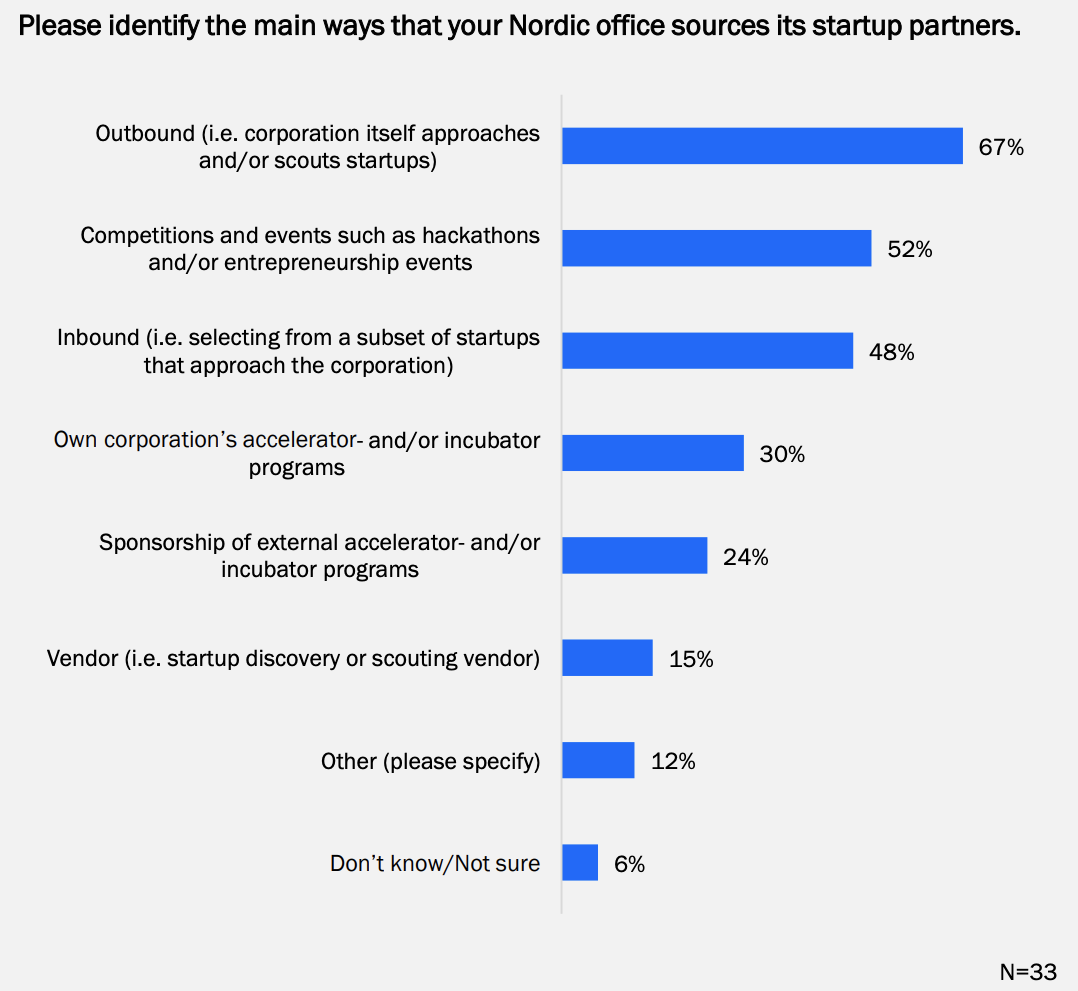startup scouting. startup scouting. startup scouting. startup scouting. startup scouting. startup scouting.
In the world of corporate-startup collaboration, the age-old debate between inbound and outbound startup scouting strategies continues to rage on. Both approaches have their merits and can be effective when used correctly. Today, we’re going to dive deep into a crucial aspect of this topic:
If your inflow is only limited to the companies that have time to spend on reaching out to you, are you sure it is the best one doing that?

Source: Inbound vs Outbound
Inbound strategies focus on creating valuable content and experiences that attract potential partners to your business naturally. Strategies include SEO, social media marketing, and generally building a strong online presence. The aim is to provide relevant information to individuals who are already searching for solutions or information related to your industry. What are some advantages of the inbound approach to startup collaboration?
While inbound is undeniably effective at attracting potential organisations to collaborate with who are actively searching for support, it has limitations. Your inflow is limited to those who are actively seeking information or solutions and can take time to build momentum. Additionally, inbound strategies might not always capture the attention of the most desirable, high-value prospects, as they may not be actively searching or might be more elusive. Let’s have a look at how to avoid this problem!
Outbound startup scouting strategies are often associated with the proactive, traditional methods of reaching potential partners. The goal is to cast a wide net and make your presence known to as many people as possible, in the hope of capturing the attention of those who might be interested in your innovation project. By implementing outbound startup scouting, innovation managers experience benefits such as:
The most valuable opportunities might not always have the time or inclination to seek out solutions actively, and a well-executed outbound strategy can put your business on their radar.
The obstacles faced by corporations in their partnership with startups are often due to internal matters. One difficulty is risk aversion and, in many organisations, the chance that a project may fail is considered as something that should be avoided from the outset. It is insufficient to create a dedicated innovation team. The company as a whole must be committed in order to change the business, launch new products, and create new business models. As a result, when working with startups, the organisation as a whole must be in alignment.
To find the perfect startup partners, corporations should adopt a strategic approach. It is crucial for big organisations to have a systematic method to approach innovation partnerships and not entirely rely on startup inquiries. However, many companies still use highly inefficient tools to track them, resulting in poor outcomes and too many options. “The more, the merrier” does not always have a positive connotation, particularly when analyzing results one by one, which we call SAD syndrome.
According to “name of study”, Nordic corporations use a variety of channels to locate and interact with startups. It is also abundantly obvious from the interviews that corporations mix several strategies to connect with entrepreneurs. Having a venture client program and constantly being on the lookout for new entrepreneurs is an example.
Establishing events or programs is a more organised method of sourcing startup partners than either outbound (67%) or inbound (48%) operations. According to the poll, contests, and events like hackathons and/or entrepreneurship events are frequently used to find startup partners (52%) since they allow corporations to engage the startup ecosystem around a certain theme and issue a call for businesses. But how can you be 100% sure that the startup activity is exactly what you are looking for? Imagine having an AI-powered tool that identifies the perfect matches for your innovation projects, today this is possible thanks to Novable!

A startup scouting engine strategic assumption is that companies today don’t make the most out of technology to turn their startup scouting activities faster, easier, and much more efficiently.
In today’s fast-paced business world, innovation management has become a matter of survival. The future of corporations lies in their capacity to innovate fast and efficiently. Yet, most of them are static and slowed down by bureaucracy, and can’t afford an internal R&D department. A couple of figures illustrate this threat:
Novable gives you access to the smartest corporate venturing platform on the market, complementing our AI-powered matching engine (DeepMatching™) with the expertise of a dedicated team going the extra mile to deliver in-depth validation and vetting solutions.
“Novable seemed like the best option in terms of user experience, price, and results. Having those lists of companies presented to you every couple of days cuts down on so much time and it’s a much easier workflow for me”. Liam Webber, Innovation Outreach at Whitespace.
The best marketing strategy often lies in finding a balance between outbound and inbound efforts. By doing so, you can maximise your reach and ensure that you’re not missing out on valuable opportunities that might not come knocking on your door. Here are a few tips for achieving this balance:
What is your opinion on the topic? Share your thoughts with us on LinkedIn!